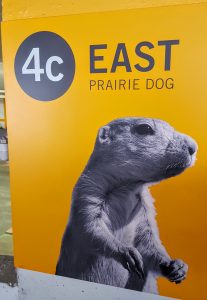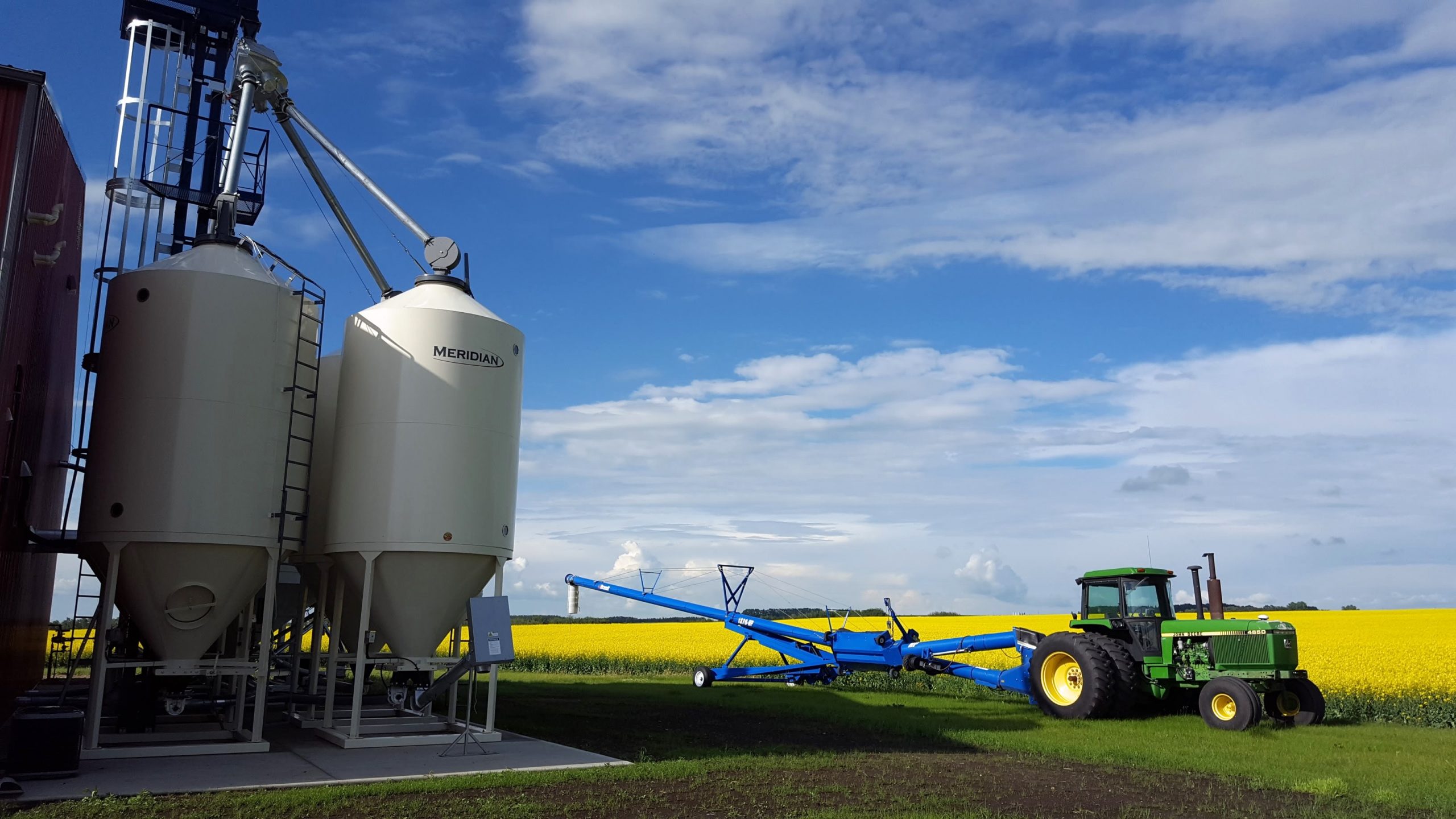
Prairie Dog Level at the Palliser One parking garage in Calgary, AB.
TL;DR: Not all founders are full-time in Calgary yet, but we met up recently to finalize plans, visited with other brewers and got a good a feel for Calgary craft beer. We’ve been looking at properties and are getting serious about a couple of them, but nothing picked yet. Finalizing business plan and making a lot of beer to develop recipes, can use feedback. Anticipating opening no earlier than July 2017.
Starting a new business is a complicated affair. Being a producer of alcohol, a brewery may be one of the most regulated businesses you can start up, even more so when you add food production to the mix. There is a lot for us to do and a lot of things have to go on in the background before many of the sexy, customer facing announcements can be made. However, there have been a few interesting developments of the past few months that we can talk about.
In late May Laura and I went up to Valemount, BC to work at Three Ranges Brewing Company (3RBC), which was founded by our cousins Michael Lewis and Rundi Anderson. We spent about nine days in Valemount, and I spent most of my time at the brewery helping Michael and his assistant brewer Clayton in all capacities. While there I prepped and filled a lot of Sanke kegs, learned to use industrial chemicals like caustic and peracetic acid to clean out tanks post-fermentation, harvested and reused yeast, mixed a honey addition for a batch, and of course brewed a lot of beer. Laura and I also spent time learning more of the back-office side of things, getting familiarized with software and accounting, ingredient purchasing, and filing for excise tax and provincial markups. I also learned about tap maintenance and even made a delivery to a local customer. It was a lot of twelve to sixteen hour days that felt like three weeks of work condensed into one, but we had a blast and were able to learn a lot of things that you just can’t do at home as homebrewers. A huge thank-you goes out to Michael for letting us monopolize his time for the week and for taking so much of his limited personal time to go over our financials and assumptions with us.
Shortly after this time we began an engagement with First Key Consulting out of Vancouver, who are providing us with feedback and advice for our business plan. We learned about First Key on recommendation from another startup brewery owner we had met in Valemount, Bjorn Butow, who is founding CrossRoads Brewery in Prince George, BC. FYI – CrossRoads are currently looking for a qualified head brewer and brewery manager, spread the word if you know someone.
In early July our partners Tyler and Sarah relocated their belongings to Calgary, leaving the San Francisco Bay area behind. At the same time, our Executive Chef flew to Calgary so that we could all be together and get on an even footing, finalizing many of the details about our business plan and familiarizing everyone with the local Calgary scene. The Calgary Stampede was going on at this time, adding to the sense of what Calgary is all about.
During our “business summit”, we visited several local businesses and breweries. At Trolley 5, another brewpub that opened only a couple of weeks prior to the Stampede, we were lucky enough to bump into Ernie Tsu, one of the owners and a veteran of the Calgary scene. Ernie gave us a private tour and had a lot of great advice for us — we were thrilled that he was so eager to share information and give us pointers, and we are certain that he will be a good friend of the brewery moving forward. And he took the time to do this during the first Saturday night of Stampede!
Later on the same night we visited Last Best, and quickly made a connection with Phil Brian, their Director of Operations and brewmaster. Phil shared samples of his latest Berlinerweisse from a brite tank and ended up chatting with us over pints of his other excellent beers for over three hours! We had been looking at leasing space nearby and asked Phil what he thought about having another brewpub within spitting distance of his own — his answer, “Wonderful!”. Phil believes that the more breweries we have in Calgary the more we all benefit, and having breweries clustered together makes it a lower-risk proposition for someone to go to the effort of commuting down to the Beltline and spending an evening there, since there would be more options if their first target was packed or closed for a private event, making the area more of a brewery destination. We really like the Beltline area and are currently in talks with a landlord there about a space, but there are significant financial and logistical barriers to entry here, so we are also considering other options.
Also during the same week we made pilgrimages to Brewsters, Wild Rose and Dandy. We would have loved to visit many other breweries as a group but unfortunately ran out of time. Tyler and Sarah left after our summit to begin a six week cross-Canada road trip, something they had to do before starting full time on the brewery, knowing that it could be a long time before any of us get the time to be away for more than a few days at a time. We expect Tyler and Sarah to return to Calgary in early September, and will be out and involved in the scene much more after they return.
https://www.instagram.com/p/BH-JuoEDff5/?taken-by=prairiedogbrewing
One thing we can’t forget to mention is our visit to Red Shed Malting near Red Deer, Alberta. We have always planned on using ingredients from locally-owned businesses, and Red Shed fits the bill perfectly. We met up with brothers Matt and Joe Hamill, who have set up a small but relatively sophisticated malting facility on their family farm. Matt and Joe are homebrewers turned businessmen, and are no slouches when it comes to malting. The two use barley from their own family farm and surrounding fields to produce both a base malt (pale 2-row), which forms the majority of backbone in a beer, and more complex roasted varieties that can give beer caramel, raisin, plumb, chocolate and coffee flavors and aromas. We toured their facility and picked up some of everything so that we could get a feel for the different malts and develop recipes that exemplify the terroir of their local barley. Since the visit we used their malts to brew up a batch of Southern English brown ale, specifically chosen because it is a malt-forward beer that highlights the qualities of the malts being used, and is easy to drink at about 4.5% ABV. The beer came out quite delicious and I can find very few faults with this first recipe, which I developed specifically for the malts available, which begins with a delicious nuttiness and finishes with coffee and toffee dominating and leaving an aftertaste that begs you to drink another. The beer is deliberately dry for a brown, without a lot of residual sugar or cloying aftertaste, which I prefer in my beers in general. Definitely expect to see this beer brewed again and more Red Shed malt used in Prairie Dog’s future!
As we mentioned earlier, we have been looking around a space for lease for quite a while, all the way back to April or May. We have visited many locations and found more than one with good potential to be a brewpub. Every space has benefits and drawbacks either based on the space itself, the location, the mentality of the landlord, or cost. At this point we haven’t committed to any single location, but have engaged with a couple of landlords to begin more serious negotiations, one in the Beltline and the other in South Calgary near the Calgary Farmer’s Market. The location we choose will have a tremendous impact on the details of our business plan; a location downtown would have a very different set of demographics, operating hours and costs than a location in a business park, so our plan will not really be finished until we have settled on one location.
Once we sign a lease for a location, the rubber will finally meet the road on this project. From the moment we have a location picked out we can begin working with designers, architects and engineers to design the space and decide on any necessary building modifications. All of these modifications and a full sets of drawings must be submitted to the landlord for approval, then to the city for permitting and approval of the land use. A condition of our lease will be obtaining city approval for our land use and building permits from the city, which may take two to four months, after which we could physically gain access to the space and begin work such as demolition, adding floor drains and sloping floors, bringing in a boiler and building the boiler room to contain it, upgrading electrical service, HVAC, fire suppression systems, sewage, and water, as necessary, and at some point, ordering and obtaining our brewhouse, fermenters, and serving tanks. After this we need to build the restaurant and kitchen, update building facades, get inspections from the fire department, health department, and building inspectors, as well as putting in our applications with the AGLC and Federal Government to be allowed to produce and sell beer. After the brewhouse arrives, we have a ton of setup to do with the manufacturer, and plumbing in of various systems such as steam, water, and glycol. At least one chiller system will need to be installed on the roof of our building, as well. Then we have to think about staffing and start sourcing ingredients, building out menus and brewing calibration/test batches.
As should be abundantly clear by now, this is a massive project and it will take a long time to get to a point where we are actually producing beer and opening our doors to the public. We anticipate it taking until at least July of 2017 before our doors open based on our current situation. In the mean time, we are doing our best to get out there and meet other local business owners and as many brewers as possible, and we will be working to meet with more of the local homebrewers through the Yeast Wranglers club and other efforts.
https://www.instagram.com/p/BIxmGABhIWt/?taken-by=geradprairie
We are brewing a lot of beer at home right now, iterating on recipes as much as possible so that we have a large set of well-developed and proven recipes to draw upon at opening. We recently increased our homebrewing capacity from 10 to 15 gallons per batch as well as adding a second fermenter, allowing us to now produce about three times more beer than before. If you are interested in learning more about the process of brewing beer, shoot me an email at the same address and we can arrange for you to work with us for a day while we brew beer.
We are also very excited because we have tickets to the sold-out Great American Beer Festival (GABF) in Denver, Colorado in October, where we hope to learn more about what others are doing in the industry around North America and taste many fine examples of beers made from high-quality local ingredients by passionate brewers, just like ours.

